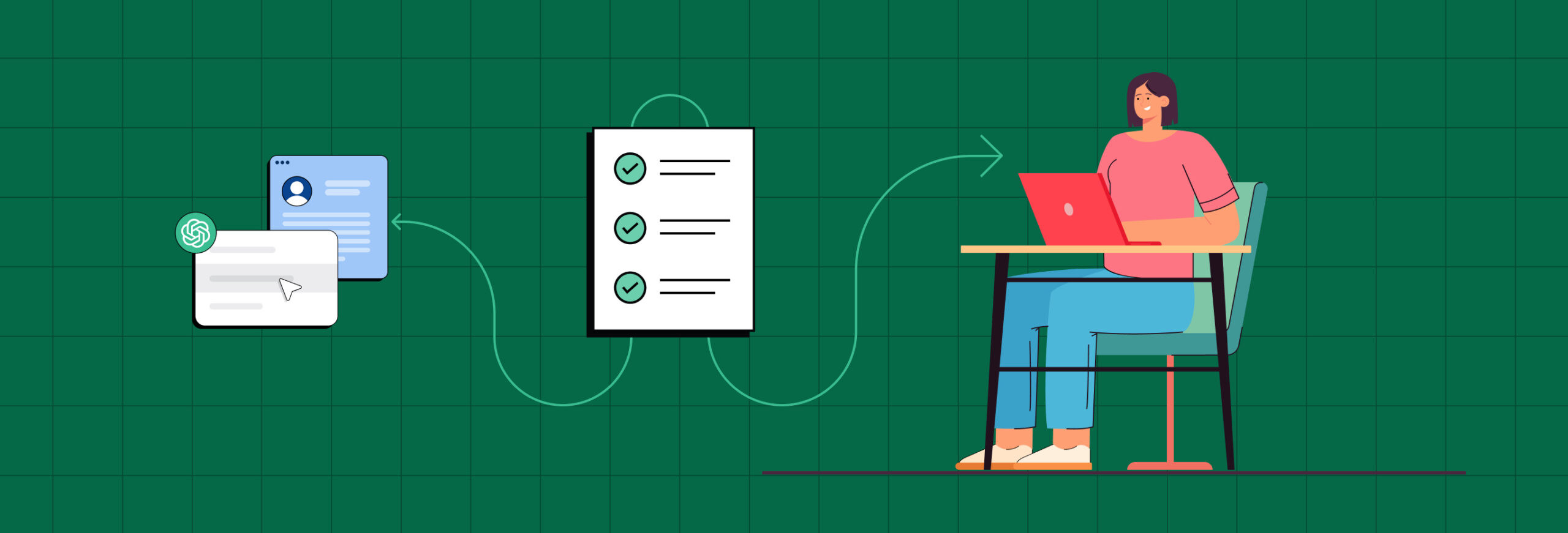Generative AI has become a ground-breaking technology that has the ability to change businesses in many different fields. At first, Generative AI was mostly used for artistic things like art, music, and writing. Now, it is also being used to change how IT works in organizations. By using the power of machine learning algorithms to simplify tasks, improve decision-making, and optimize processes, Generative AI can help IT teams save time, work more efficiently, and be more productive.
In this blog post, we’ll talk about how Generative AI is changing IT processes in businesses and show some interesting ways this technology is being used in the IT field. We will also talk about how it can be used to automate routine jobs, make better decisions, and improve processes. But we also need to deal with the problems and things to think about that come with using Generative AI in IT, such as social issues, data quality, and the need for specialized skills.
Organisations need to use best practises to get the most out of Generative AI in IT processes. This means building a strong data system, starting small and growing slowly, and making sure that everything is clear and everyone is held accountable. By following these rules, companies can use Generative AI to its full potential and improve their IT processes.

What are some of the benefits of generative AI for IT teams operations?
Generative AI is a potential option that provides a variety of benefits that can assist IT teams in managing complicated processes more successfully. In this part, we’ll look at some of the primary advantages of Generative AI in IT operations and how this technology may assist organizations in overcoming typical IT difficulties.
 Automating routine tasks
Automating routine tasks
One of the key benefits of generative AI in IT operations is its ability to automate routine tasks. IT teams often spend a significant amount of time on repetitive, low-value tasks, such as data entry or system maintenance. By using generative AI to automate these tasks, IT teams can free up valuable time and resources to focus on higher-value activities, such as strategic planning or innovation. For example, generative AI can be used to automatically provision and configure servers or troubleshoot network issues, reducing the time and effort required by IT teams.
 Improving decision-making
Improving decision-making
Another benefit of generative AI in IT operations is its ability to improve decision-making. By analyzing large amounts of data and identifying patterns and relationships, generative AI can help IT teams make more informed and data-driven decisions. For example, generative AI can be used to analyze network traffic data and identify potential security threats or anomalies. This can help IT teams to quickly identify and respond to security incidents, reducing the risk of data breaches and downtime.
 Optimizing workflows
Optimizing workflows
Generative AI can also help optimize workflows within IT teams. By automating routine tasks and improving decision-making, generative AI can help IT teams to work more efficiently and effectively. For example, generative AI can be used to optimize server provisioning workflows, reducing the time and effort required to deploy new servers. Additionally, generative AI can be used to optimize network routing and traffic patterns, improving the performance and reliability of IT systems.
Some use cases of generative AI in IT operations:
Let’s look at how Generative AI is being utilized in the IT sector to promote innovation and increase efficiency, from network optimization to server provisioning and security management.
 Network optimization:
Network optimization:
It is a key part of IT operations because it has a direct effect on speed and stability. IT teams can use generative AI to improve network traffic by analyzing trends and making suggestions for improvements in real-time. Generative AI algorithms can, for example, be used to find network problems, improve routing protocols, and predict future demand based on how traffic has changed in the past. This can help IT teams improve network speed, cut down on downtime, and give end users an overall better experience.
 Server Provisioning:
Server Provisioning:
Setting up and arranging servers to meet specific speed and capacity needs is part of server provisioning. This process can take a long time and make mistakes, but Generative AI can help speed it up and make it more accurate. By looking at how servers are used, Generative AI programs can make accurate predictions about future demand and make sure that servers have the right resources. For example, if the way a server is used shows that it often runs out of memory, Generative AI can suggest that the amount of memory given to that server be increased. This can help IT teams make sure their computers work well and quickly.
 Security Management:
Security Management:
Because online risks are getting more complicated, IT teams need to be proactive about finding and fixing possible security problems. Generative AI can help by looking at security logs and finding trends that point to possible security problems. For example, Generative AI algorithms can be used to find unusual user behavior, find possible system flaws, and create realistic attack situations that can be used to test and improve security defenses. This can help IT teams stop security breaches from happening before they happen and keep important data and systems safe.
Challenges and Considerations for using generative AI for IT team operations
Even though Generative AI has a lot of benefits for IT operations, there are also a number of difficulties and things to think about when putting it into place. In this part, we’ll talk about some of the most important problems and things to consider when using Generative AI in IT processes.
 Ethical Concerns:
Ethical Concerns:
One of the biggest ethical worries about Generative AI is that it could lead to unfair or hurtful results. The data that generative AI systems use to learn from can be biased or show past injustices. This can lead to programs that keep or increase biases that are already present, which can have real-world effects. For example, a Generative AI program used to make job titles may unintentionally leave out some groups of people based on how they have been treated in the past. Organizations need to be aware of these possible biases and do what they can to reduce them.
 Data Quality and Bias:
Data Quality and Bias:
When using Generative AI in IT processes, data quality and bias are also important things to think about. How well Generative AI systems work depends directly on how accurate and high-quality the data used to teach them is. When algorithms are made with bad or biased data, the results can be wrong or biased. Before using their data to train Generative AI systems, organizations should make sure that their data is varied, representative, and free of bias.
Implementing Generative AI in IT operations needs a certain set of skills that may be different from standard IT skills. Generative AI systems are often designed, built, and kept up by data scientists, machine learning engineers, and other AI experts. For Generative AI to work well, organizations must be ready to spend money on teaching and hiring people with the right skills and knowledge.
Best practices for implementing generative AI for IT team operations
Generative AI for IT team needs to be carefully planned and carried out. Organizations need to follow best practices that help them build a strong base for this technology if they want to be successful. In this part, we’ll talk about some of the best ways to use Generative AI in IT processes.
 Building a Strong Data Infrastructure:
Building a Strong Data Infrastructure:
Data is the basis of Generative AI, so it is important to build a strong data infrastructure. Organizations need to make sure that their data is accurate, varied, and a good representation of the whole. This means finding the right sources of data, cleaning and preprocessing the data, and making a system for data control that makes sure data quality, safety, and security.
 Starting Small and Growing:
Starting Small and Growing:
Because generative AI can be hard to understand and use a lot of resources, it’s important to start small and grow slowly. Organizations should find Generative AI use cases that align with their business goals and work on making a minimum viable product (MVP) that shows worth. This lets companies try and improve their Generative AI solutions before putting them to use on bigger projects.
 Making sure there is transparency and accountability:
Making sure there is transparency and accountability:
Generative AI can sometimes be hard to understand, which can raise issues about bias, responsibility, and the ability to explain. To deal with these worries, companies need to make sure that their Generative AI solutions are open, responsible, and easy to understand. This means making clear governance models, setting up testing and validation processes, and putting in place ways to track and watch results.
Conclusion
No longer is “generative AI” just a phrase. It is the present and the future of IT operations, and it is already changing how organizations run their IT processes. From optimizing networks to managing security, Generative AI is changing IT operations by handling boring tasks and speeding up important processes.
But Generative AI has more to offer than just automation and speed. With the latest Generative AI technology, virtual helpers like Leena AI can help organizations reach new levels of productivity, solve user problems faster, and help IT teams in real time. Imagine having a personal virtual helper who knows how your IT works and can answer user questions quickly and correctly. Leena AI is ready for all kinds of IT operations in the business and is set to change the way organizations handle their IT operations.
But there are some hurdles to putting Generative AI to use in IT processes. Concerns about ethics, the quality of data, and the need for specialized skill sets are just a few of the things that organizations must think about to be successful. But organizations can get the most out of Generative AI in IT operations if they follow best practices and put money into the right people and technology.






